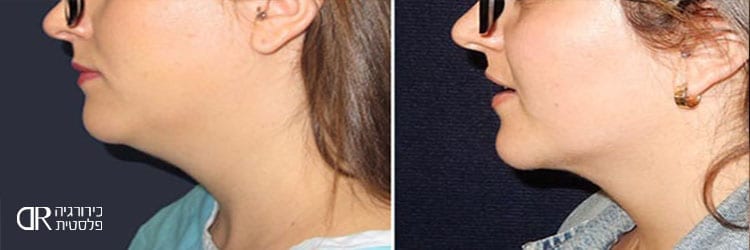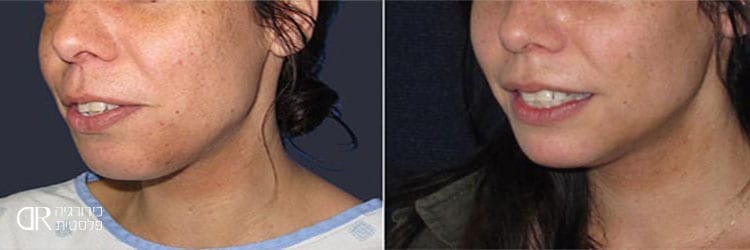For whom is chin surgery designed?
During the pre-surgical consultation, the face will be examined, and the expectations and methods of surgery will be discussed. In most cases, chin augmentation can be performed under local anesthesia. Currently, most chin augmentations are aimed at increasing or emphasizing the chin area when the chin is small and drawn backwards. Chin enlargement can be accomplished via placement of silicone implants or other permanent materials, or injection of fat tissue (from another location on your body) or other absorbable filling material. Chin reduction is more commonly performed under general anesthesia, and is achieved via planing or filing, or removal of excess bone (every case according to specific need). Needless to say, the decision is made after the cause of chin protrusion is determined, sometimes necessitating an x-ray of the area.
Chin enlargement via insertion of an implant is done through a small incision underneath the chin or through the mouth.
The size and shape of implant is determined according to the specific dimensions of the patient. Duration of surgery is approximately 40 minutes. Injection of fat tissue into the chin area is also performed under local anesthesia. Fat is collected from a designated area in the body (stomach, waistline, thigh, etc.), filtered, processed, and subsequently injected into the chin area. The main disadvantage of this method is partial absorption of the fat after injection, possibly necessitating an additional injection of fat at a later date.

Chin Contouring Photos before and after

Long chin tied (pictures before and after)
Chin Contouring
At the end of surgery, the patient is discharged with only a small bandage. The initial recovery period may be accompanied by local tenderness, swelling and edema, transient bruising of the overlying skin that passes after approximately 2 weeks. The final profile of the chin will take shape only after several months, once all swelling has subsided.
The complications of surgery are rare, and include:
-
- Bleeding that may necessitate drainage in the operating room
- Local infection that can be treated conservatively
- Necessity of an additional surgery for repair or improvement (if indicated)
- Transient or permanent loss of sensation in the area
- Conspicuous scarring
- Relocation of the implant
Further details regarding this surgery can be obtained during the pre-surgical consultation.
We want to see our amazing results Chin Contouring?
Are ready to receive advice and guidance regarding Chin Contouring?
You can call us at 1700-506-504 or leave details here and we will get back to you soon!

